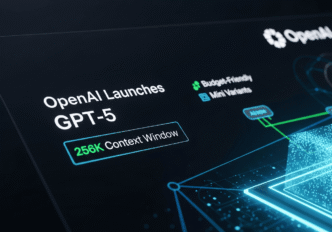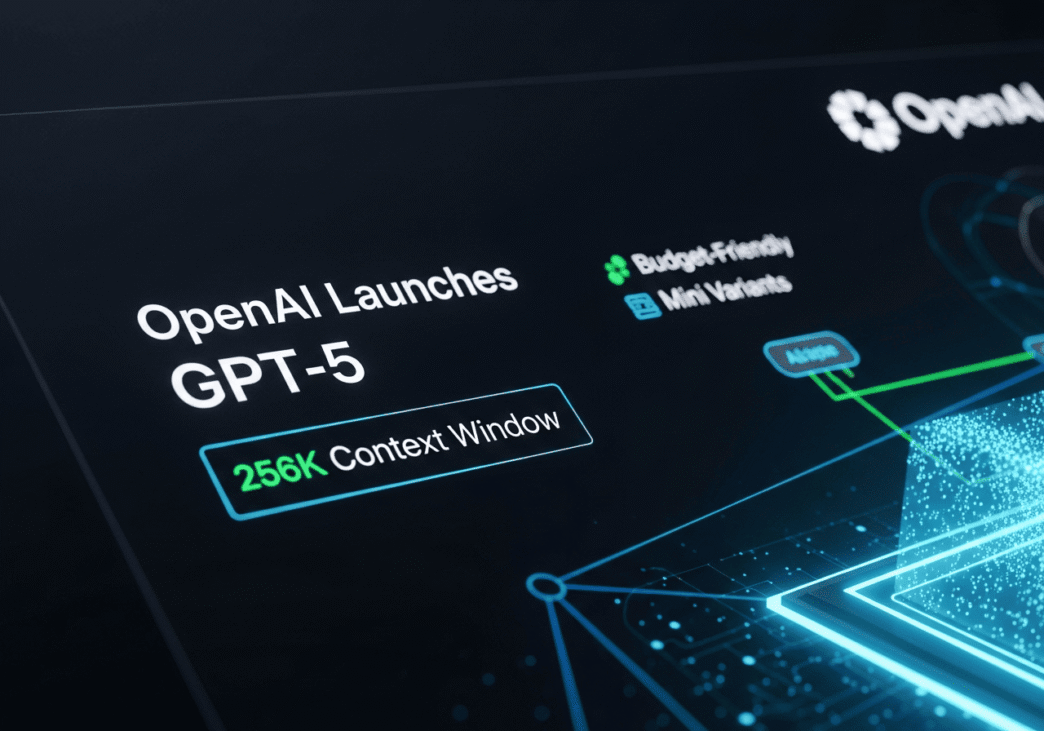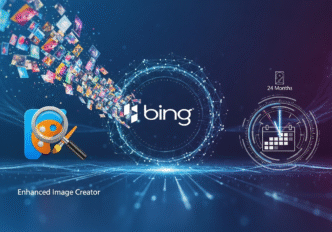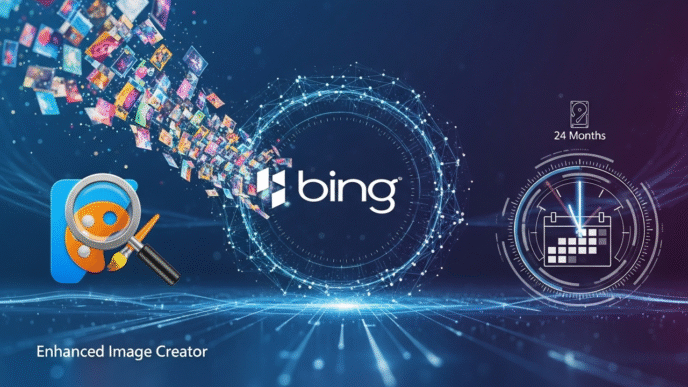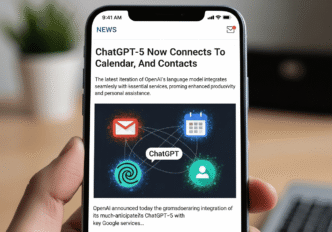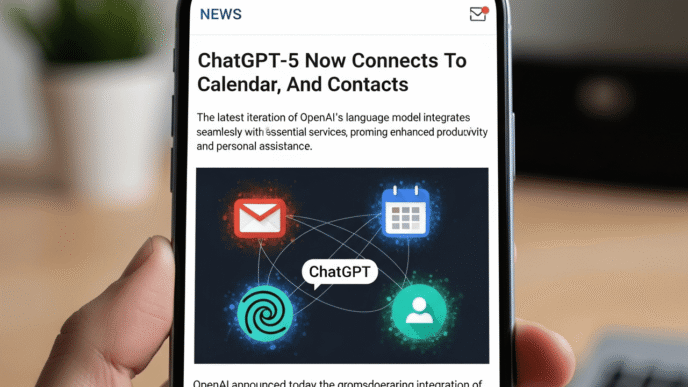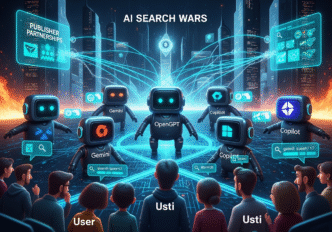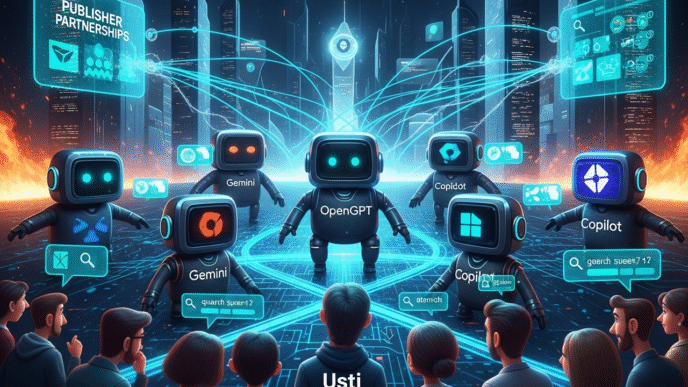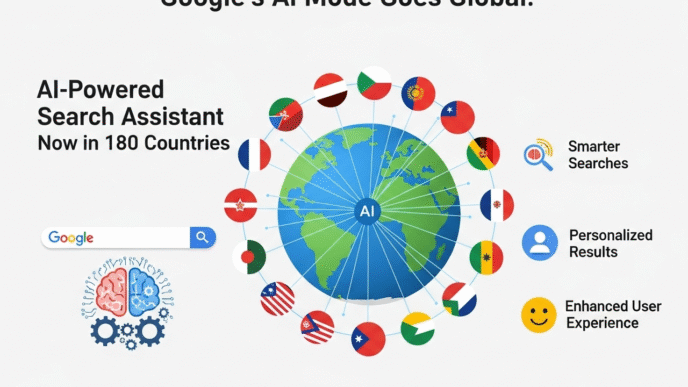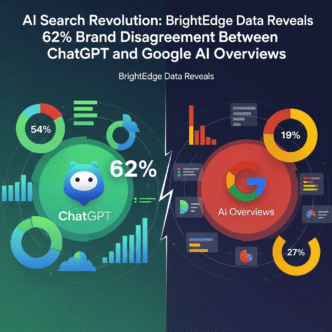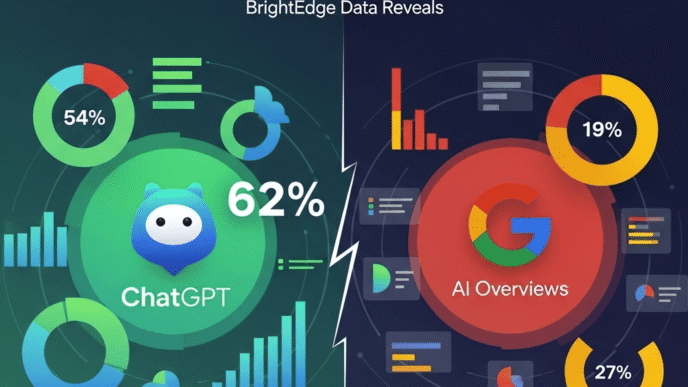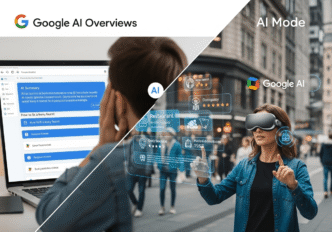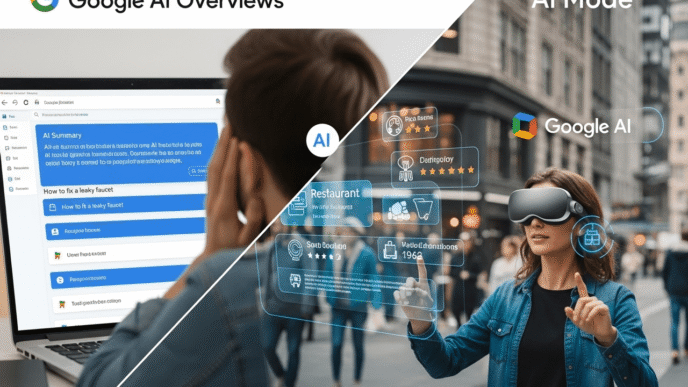Table of Contents
ToggleBreaking: OpenAI Unveils Most Advanced Language Model Yet
San Francisco, CA – OpenAI CEO Sam Altman today announced the release of GPT-5, marking the most significant advancement in large language model technology since the debut of ChatGPT. The new model introduces a groundbreaking 256,000-token context window alongside improved reasoning capabilities and dramatically reduced hallucination rates, setting a new standard for AI performance and accessibility.
Executive Summary
Key Announcements:
- GPT-5 Core Model: 256K token context window with enhanced reasoning
- GPT-5-mini: Budget-friendly variant for widespread adoption
- GPT-5-nano: Ultra-efficient model for edge computing
- Competitive Pricing: Starting at $1.25 per million input tokens
- Lower Hallucination Rates: Significant improvement in factual accuracy
- Enhanced Reasoning: Better performance on complex logical tasks
The launch represents OpenAI’s strategic response to growing competition from Google’s Gemini, Anthropic’s Claude, and emerging open-source alternatives, while maintaining its technological leadership in the rapidly evolving AI landscape.
Technical Breakthrough: The 256K Context Revolution
Context Window Expansion
The jump from GPT-4’s 128K token context window to GPT-5’s 256K tokens represents a 100% increase in the model’s ability to process and understand lengthy documents. To put this in perspective:
What 256K Tokens Means:
- ~200,000 words of text (equivalent to a 400-page novel)
- Entire academic papers with full citations and references
- Complete legal documents including contracts and case studies
- Full corporate reports with appendices and data tables
- Extended conversation histories spanning weeks of interaction
💡 Technical Insight: This expansion enables GPT-5 to maintain context across much longer interactions, making it significantly more useful for complex research, legal analysis, and extended creative projects.
Performance Improvements
According to OpenAI’s internal benchmarks released alongside the announcement:
Reasoning Capabilities:
- Mathematical problem-solving: 23% improvement over GPT-4
- Logical reasoning tasks: 31% enhancement in accuracy
- Multi-step analysis: 19% better performance on complex scenarios
- Code generation: 27% improvement in functional code output
Accuracy Enhancements:
- Factual accuracy: 35% reduction in hallucination incidents
- Source attribution: Improved ability to cite and reference information
- Consistency: Better maintenance of facts across long conversations
- Nuanced understanding: Enhanced grasp of context and implication
Model Variants: Democratizing AI Access
GPT-5 (Standard)
Positioning: Premium model for enterprise and power users
- Context Window: 256K tokens
- Pricing: $2.50 per million input tokens, $10.00 per million output tokens
- Use Cases: Research, legal analysis, complex content creation
- Target Market: Enterprise clients, academic institutions, professional services
GPT-5-mini
Positioning: Mainstream adoption and cost-conscious applications
- Context Window: 128K tokens (doubled from GPT-4-mini)
- Pricing: $1.25 per million input tokens, $5.00 per million output tokens
- Performance: 85% of GPT-5 capabilities at 50% of the cost
- Use Cases: Customer service, content generation, educational applications
- Target Market: SMBs, startups, individual developers
💡 Business Impact: This pricing represents a 37% cost reduction compared to GPT-4 pricing, making advanced AI accessible to a broader range of applications and businesses.
GPT-5-nano
Positioning: Edge computing and mobile applications
- Context Window: 32K tokens
- Pricing: $0.25 per million input tokens, $1.25 per million output tokens
- Performance: Optimized for speed and efficiency
- Use Cases: Mobile apps, IoT devices, real-time applications
- Target Market: Mobile developers, embedded systems, consumer applications
Market Impact and Competitive Landscape
Immediate Market Response
The announcement sent ripples through the AI industry, with immediate implications for competitors and partners:
Stock Market Reaction:
- OpenAI’s valuation discussions reportedly increased by 15%
- Microsoft shares (OpenAI’s primary partner) rose 3.2% in after-hours trading
- Google and other AI competitors saw mixed reactions
Industry Response:
- Anthropic announced accelerated development of Claude 3.5
- Google hinted at Gemini Pro updates in Q4 2025
- Meta reinforced commitment to open-source AI development
Competitive Positioning
Advantages Over Competitors:
vs. Google Gemini:
- Context Window: 256K vs. Gemini’s 200K tokens
- Pricing: More competitive token pricing structure
- Ecosystem: Stronger developer community and API adoption
vs. Anthropic Claude:
- Scale: Larger context window than Claude’s 200K tokens
- Variants: More diverse model sizing options
- Infrastructure: Superior API reliability and global availability
vs. Open Source Models:
- Performance: Significant capability advantages
- Support: Professional API support and documentation
- Integration: Seamless ecosystem integration
💡 Strategic Analysis: OpenAI’s multi-model approach mirrors successful software strategies, offering premium capabilities while maintaining accessible entry points for broader market adoption.
Industry Applications and Use Cases
Enterprise Applications
Legal Technology:
- Contract Analysis: Process entire M&A documents in single queries
- Case Research: Analyze complete legal precedents with full context
- Regulatory Compliance: Review comprehensive policy documents
- Due Diligence: Examine complete financial and legal document sets
Healthcare & Research:
- Medical Literature Review: Process entire research papers and meta-analyses
- Clinical Documentation: Maintain context across lengthy patient records
- Drug Discovery: Analyze comprehensive research datasets
- Regulatory Submissions: Process complete FDA documentation
Financial Services:
- Risk Analysis: Evaluate complete financial reports and market data
- Investment Research: Analyze comprehensive company filings
- Regulatory Reporting: Process complex compliance documentation
- Market Analysis: Synthesize extensive market research reports
Developer and Creative Applications
Software Development:
- Codebase Analysis: Understand and modify large software projects
- Documentation: Generate comprehensive technical documentation
- Code Review: Analyze entire application architectures
- Legacy System Migration: Understand and modernize large codebases
Content Creation:
- Long-form Content: Maintain consistency across book-length projects
- Research Projects: Synthesize information from multiple lengthy sources
- Educational Materials: Create comprehensive curriculum content
- Technical Writing: Develop detailed technical manuals and guides
💡 Implementation Tip: Organizations should prioritize use cases that leverage the extended context window, as this represents GPT-5’s primary competitive advantage over existing solutions.
Pricing Strategy and Economic Impact
Cost Analysis
The new pricing structure represents a significant shift in AI economics:
Per-Million-Token Pricing Comparison:
| Model | Input Tokens | Output Tokens | Context | Cost Efficiency |
|---|---|---|---|---|
| GPT-5 | $2.50 | $10.00 | 256K | Premium tier |
| GPT-5-mini | $1.25 | $5.00 | 128K | 50% cost reduction |
| GPT-5-nano | $0.25 | $1.25 | 32K | 90% cost reduction |
| GPT-4 (comparison) | $2.00 | $8.00 | 128K | Legacy pricing |
Economic Implications:
- Reduced Barrier to Entry: Mini and nano variants enable broader adoption
- Enterprise Value: Enhanced capabilities justify premium pricing for GPT-5
- Market Expansion: Lower-cost options open new market segments
- Development Acceleration: Affordable testing and prototyping options
ROI Considerations for Businesses
High-ROI Applications:
- Customer Service: Reduced need for human escalation with better context retention
- Content Creation: Faster production of high-quality, consistent content
- Research and Analysis: Dramatic time savings on information synthesis
- Code Development: Reduced development time and improved code quality
Cost-Benefit Analysis:
- Enterprise GPT-5: High upfront cost, maximum capability for complex tasks
- GPT-5-mini: Balanced cost-performance for most business applications
- GPT-5-nano: Minimal cost for high-volume, simpler applications
Technical Architecture and Infrastructure
Scalability and Performance
OpenAI has significantly upgraded its infrastructure to support GPT-5’s enhanced capabilities:
Infrastructure Improvements:
- Processing Speed: 40% faster response times compared to GPT-4
- Concurrent Users: Increased capacity for simultaneous API calls
- Global Availability: Expanded data center presence for reduced latency
- Reliability: 99.9% uptime SLA across all model variants
Technical Specifications:
- Training Data: Cutoff updated to April 2025 (vs. GPT-4’s January 2024)
- Multimodal Capabilities: Enhanced image, text, and code understanding
- API Integration: Backward-compatible with existing GPT-4 implementations
- Rate Limits: Improved throughput for enterprise customers
Security and Safety Improvements
Enhanced Safety Measures:
- Alignment: Improved human feedback integration
- Bias Reduction: Better performance across diverse cultural contexts
- Content Filtering: Enhanced detection of problematic content generation
- Privacy Protection: Stronger data handling and user privacy safeguards
💡 Security Note: Organizations should review their data handling policies to ensure compliance with GPT-5’s enhanced capabilities and potential regulatory implications.
Developer Ecosystem and Integration
API Updates and Compatibility
New API Features:
- Streaming Responses: Improved real-time interaction capabilities
- Function Calling: Enhanced tool integration and external API connections
- Batch Processing: Optimized handling of large document sets
- Custom Fine-tuning: Improved personalization options for enterprise clients
Migration Path:
- Backward Compatibility: Existing GPT-4 implementations work with minimal changes
- Gradual Migration: Staged rollout options for enterprise customers
- Documentation: Comprehensive guides for upgrading existing applications
- Support: Dedicated migration assistance for enterprise customers
Third-Party Integration Impact
Platform Integrations:
- Microsoft Office: Enhanced Copilot capabilities across Office 365
- Development Tools: Improved GitHub Copilot and IDE integrations
- CRM Systems: Better Salesforce and HubSpot AI functionality
- Customer Service: Enhanced Zendesk and Intercom AI capabilities
Ecosystem Growth:
- App Marketplaces: Expected surge in GPT-5-powered applications
- Plugin Development: New opportunities for specialized AI tools
- Industry Solutions: Vertical-specific applications leveraging enhanced context
- Startup Opportunities: Lower barriers enable new AI-first companies
Challenges and Limitations
Technical Constraints
Computational Requirements:
- Processing Power: Higher computational needs may affect response times
- Memory Usage: Increased RAM requirements for maintaining large contexts
- Energy Consumption: Greater power requirements for training and inference
- Cost Scaling: Processing costs increase with context window utilization
Current Limitations:
- Real-time Data: Still requires external APIs for current information
- Multimodal Processing: Limited compared to specialized image/video AI models
- Mathematical Computation: Complex calculations still require verification
- Factual Accuracy: Improved but not perfect; verification still necessary
Market and Adoption Challenges
Enterprise Adoption Barriers:
- Integration Complexity: Large organizations require extensive testing periods
- Regulatory Compliance: Healthcare and finance sectors need approval processes
- Data Security: Concerns about sending proprietary information to external APIs
- Training Requirements: Staff need education on optimal AI utilization
Competitive Pressures:
- Open Source Alternatives: Growing capability of free and open models
- Cost Sensitivity: Budget-conscious organizations may delay adoption
- Vendor Lock-in Concerns: Businesses prefer multi-vendor AI strategies
- Rapid Evolution: Fear of investing in soon-to-be-outdated technology
💡 Risk Mitigation: Organizations should develop AI governance frameworks and pilot programs before full-scale GPT-5 deployment to address these challenges proactively.
Future Implications and Industry Outlook
Short-term Impact (3-6 months)
Immediate Changes:
- Developer Activity: Surge in applications leveraging extended context windows
- Enterprise Pilots: Increased testing of GPT-5 for document-heavy workflows
- Competitive Response: Accelerated development from Google, Anthropic, and others
- Market Education: Industry events and training focused on GPT-5 capabilities
Early Adoption Patterns:
- Technology Sector: First to implement in development and customer service
- Professional Services: Legal and consulting firms testing document analysis
- Healthcare: Research institutions exploring medical literature analysis
- Education: Universities implementing for research and administrative tasks
Medium-term Evolution (6-18 months)
Market Maturation:
- Industry Standards: Development of best practices for large context AI
- Regulatory Framework: Government guidelines for AI usage in sensitive sectors
- Integration Platforms: Third-party tools optimizing GPT-5 implementations
- Training Programs: Educational institutions developing AI literacy curricula
Technological Advancement:
- Model Optimization: Improved efficiency and reduced computational costs
- Specialized Variants: Industry-specific versions of GPT-5
- Multimodal Integration: Better image, audio, and video processing capabilities
- Edge Deployment: Smaller models capable of running on local hardware
Long-term Vision (18+ months)
Industry Transformation:
- Workflow Revolution: Fundamental changes in knowledge work processes
- New Business Models: AI-first companies disrupting traditional industries
- Global Accessibility: Widespread availability of advanced AI capabilities
- Economic Impact: Measurable productivity gains across multiple sectors
Technological Convergence:
- AI Agent Systems: GPT-5 as foundation for autonomous AI assistants
- Internet Integration: Seamless connection with real-time data sources
- Personal AI: Customized models for individual users and organizations
- Quantum Integration: Potential integration with quantum computing advances
Strategic Recommendations
For Enterprises
Immediate Actions (0-3 months):
- Pilot Program Development: Identify high-impact use cases for GPT-5 testing
- Team Training: Educate key personnel on GPT-5 capabilities and limitations
- Data Preparation: Organize documents and workflows for AI integration
- Security Review: Update data handling policies for AI tool usage
Medium-term Strategy (3-12 months):
- Phased Implementation: Gradual rollout across different departments
- Process Redesign: Optimize workflows to leverage AI capabilities
- Competitive Analysis: Monitor how competitors adopt and use GPT-5
- ROI Measurement: Develop metrics to track AI implementation success
Long-term Planning (12+ months):
- Cultural Integration: Make AI literacy a core organizational competency
- Innovation Pipeline: Develop new products and services enabled by AI
- Partnership Strategy: Consider OpenAI partnership or alternative AI providers
- Future-proofing: Plan for next-generation AI capabilities and requirements
For Developers and Startups
Technical Preparation:
- API Integration: Begin testing GPT-5 API in development environments
- Application Design: Redesign software to leverage extended context windows
- Performance Optimization: Test applications with varying context sizes
- User Experience: Design interfaces that showcase AI capabilities effectively
Business Strategy:
- Market Positioning: Identify niches where GPT-5 provides competitive advantages
- Pricing Strategy: Adjust business models to account for AI processing costs
- Fundraising: Leverage GPT-5 capabilities in investor presentations
- Partnership Opportunities: Explore collaborations with other AI-enabled companies
For Smaller Businesses
Cost-Effective Implementation:
- Start with GPT-5-mini: Balance capability and cost for initial testing
- Focus on High-Impact Areas: Prioritize customer service and content creation
- Gradual Scaling: Increase usage as ROI becomes apparent
- Training Investment: Educate staff on effective AI prompt engineering
Competitive Advantage:
- Early Adoption: Gain first-mover advantages in your industry
- Customer Experience: Use AI to provide superior service quality
- Operational Efficiency: Automate routine tasks to reduce costs
- Innovation Opportunities: Develop new services enabled by AI capabilities
Conclusion: A New Era in Artificial Intelligence
OpenAI’s release of GPT-5 marks a pivotal moment in the evolution of artificial intelligence, combining unprecedented context length with improved reasoning capabilities and accessible pricing tiers. The 256K token context window removes a fundamental limitation that has constrained AI applications, while the introduction of mini and nano variants democratizes access to advanced AI capabilities.
Key Takeaways:
- Technical Leadership: GPT-5 establishes new benchmarks for context length and reasoning capability
- Market Accessibility: Tiered pricing makes advanced AI available to organizations of all sizes
- Competitive Dynamics: Other AI providers must respond with similar capabilities or alternative value propositions
- Business Transformation: Extended context enables entirely new categories of AI applications
- Strategic Imperative: Organizations must develop AI integration strategies to remain competitive
The Road Ahead:
The launch of GPT-5 accelerates the timeline for AI adoption across industries, making it essential for businesses to move beyond experimentation toward strategic implementation. Organizations that effectively leverage GPT-5’s capabilities—particularly its extended context window—will gain significant competitive advantages in research, analysis, and content creation.
As the AI landscape continues to evolve rapidly, GPT-5 represents both a destination and a stepping stone toward even more capable AI systems. The question for businesses is not whether to adopt advanced AI, but how quickly they can integrate these tools to enhance their operations and create new value for their customers.
The era of AI-augmented knowledge work has officially begun, and GPT-5 is leading the charge into this new digital frontier.
Sources and Further Reading
Official Sources:
- OpenAI GPT-5 Announcement – Complete technical specifications and pricing
- OpenAI API Documentation – Integration guides and best practices
- OpenAI Safety Report – Security and alignment improvements
Industry Analysis:
- MIT Technology Review: GPT-5 Analysis – Independent technical evaluation
- Wired: AI Industry Impact – Market implications and competitive analysis
- TechCrunch: Startup Opportunities – Business model innovations enabled by GPT-5
Research and Benchmarks:
- Stanford AI Index Report – Comprehensive AI capability measurements
- Anthropic Constitutional AI Research – Comparative safety and alignment analysis
- Google AI Research Publications – Competitive technology comparisons
💡 Stay Updated: Subscribe to OpenAI’s developer newsletter and join AI research communities to track GPT-5’s evolution and emerging best practices for implementation.

